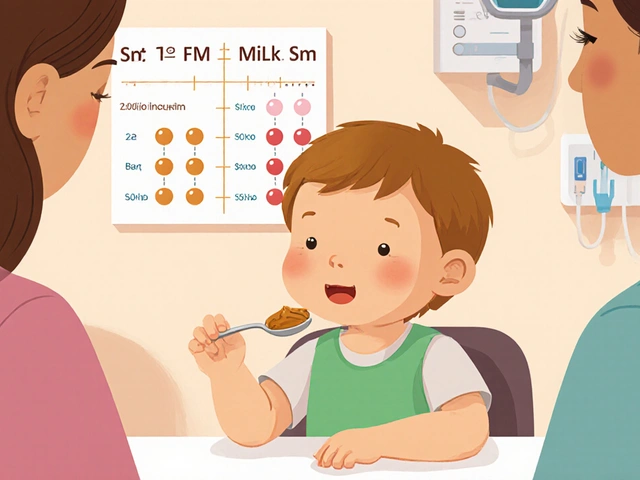Why Electrolyte Balance Is Crucial for a Healthy Heart
Learn why electrolyte balance is vital for heart health, how imbalances cause hypertension and arrhythmias, and get practical steps to keep your minerals in check.
When working with Sodium, an essential electrolyte that regulates fluid balance, nerve signals, and muscle function. Also known as Na, it is most commonly consumed as sodium chloride, the table salt that flavors our meals. High dietary sodium intake is a leading factor in raising blood pressure. Understanding these connections helps you make smarter choices about what you eat and how you stay healthy.
At its core, sodium is a charged particle (Na⁺) that pulls water into your bloodstream. This property keeps blood volume stable, which in turn supports heart output. Think of it as the thermostat for your body’s water system – too little and you feel dizzy, too much and you get swelling. The kidneys act like a filter, excreting excess sodium in urine. When the filter works well, your sodium level stays in a narrow range (135‑145 mmol/L). That balance is why doctors check electrolyte panels during routine exams.
One of the biggest ways sodium shows up is in the form of salt on the table. Processed foods are loaded with added sodium to boost flavor and preserve shelf life. A slice of pizza, a handful of chips, or a ready‑to‑eat soup can each contain 500‑1,200 mg of sodium, quickly adding up to the recommended limit of 2,300 mg per day for most adults. For people with hypertension, the American Heart Association suggests aiming for 1,500 mg daily to lower risk.
Beyond blood pressure, sodium interacts with other electrolytes like potassium and magnesium. High sodium and low potassium together strain the cardiovascular system, making heart attacks more likely. That's why nutrition guides often pair “reduce salt” advice with “eat more leafy greens” – greens boost potassium, which helps counterbalance sodium’s pressure‑raising effect.
If you’re an athlete or work in a hot environment, your sweat can lose up to 1,500 mg of sodium per hour. In those cases, replenishing sodium through sports drinks or salty snacks helps prevent cramps and maintains performance. The key is matching intake to loss, not loading up indiscriminately.
Kidney disease flips the script. When kidneys can’t filter properly, even normal sodium amounts cause fluid buildup, leading to edema and worsening blood pressure. Doctors often prescribe low‑sodium diets (under 1,500 mg) and may add diuretics to help the body shed excess fluid. Monitoring label information becomes crucial for these patients.
Practical ways to keep sodium in check are simple: read Nutrition Facts labels, choose fresh over processed, use herbs and spices for flavor, and rinse canned beans or vegetables to wash away added salt. Swapping butter for olive oil, opting for low‑sodium broth, and grilling instead of frying can shave off hundreds of milligrams each meal.
Below you’ll find a curated list of articles covering everything from stress‑related skin issues to safe online purchases of generic medicines. While the topics vary, many touch on sodium‑related health concerns – whether it’s blood pressure management, electrolyte balance in stress, or dietary tips for chronic conditions. Dive in to get actionable insights that complement the sodium basics you just read.
Learn why electrolyte balance is vital for heart health, how imbalances cause hypertension and arrhythmias, and get practical steps to keep your minerals in check.

A detailed guide comparing dipyridamole with aspirin, clopidogrel, ticagrelor, prasugrel, warfarin and heparin, covering mechanisms, dosing, side effects, interactions, and best-use scenarios.

When traveling abroad, our skin encounters different climates and environments that can lead to skin infections if we're not careful. From choosing the right clothing to packing essentials like hand sanitizers, learning how to protect your skin is crucial. Discover practical tips to maintain healthy skin while enjoying international adventures. Staying informed about preventative steps can save you from discomfort and medical issues. It's all about being prepared and knowing how to react to unexpected skin troubles.

Pancreatic cancer, often detected too late, poses higher risks as we age. This article explores why aging increases vulnerability to this aggressive cancer, highlighting crucial warning signs and the importance of early detection. Find practical tips for reducing risks and insights into the latest research. The link between age and pancreatic cancer isn't just a number game—it involves lifestyle and genetic factors, which we'll unpack.

As a blogger, I've recently been researching the use of calcium carbonate in the cosmetic industry. I've discovered that it offers some great benefits, such as acting as a gentle exfoliant and helping to balance the pH levels of our skin. However, there are also some concerns surrounding its use, including potential irritation for those with sensitive skin and the possibility of environmental harm caused by mining for this ingredient. Overall, it's important to weigh the pros and cons and consider personal skin needs when choosing products containing calcium carbonate. Stay tuned for a more in-depth look at this intriguing ingredient in an upcoming post!

Oral food challenges are the most accurate way to diagnose food allergies. Learn how they work, why they're safer than you think, and how they can end unnecessary food restrictions for you or your child.
